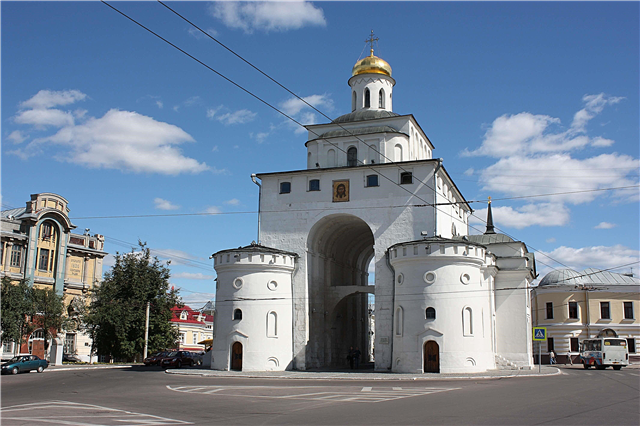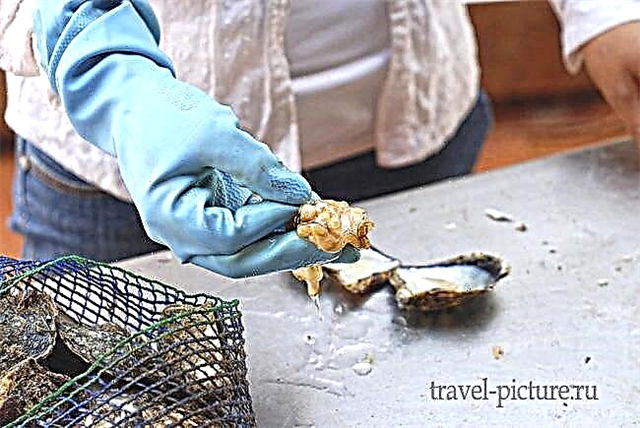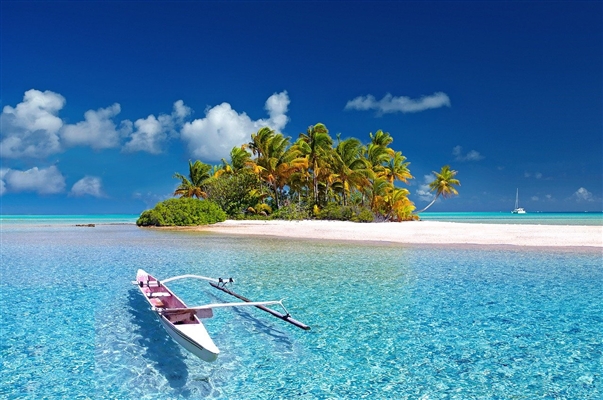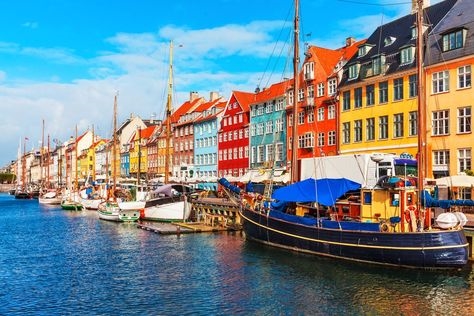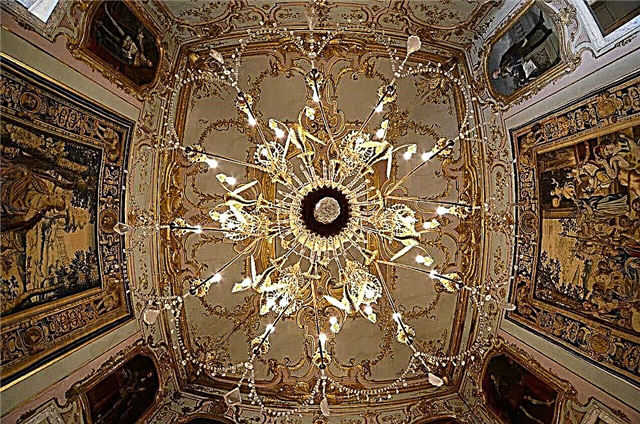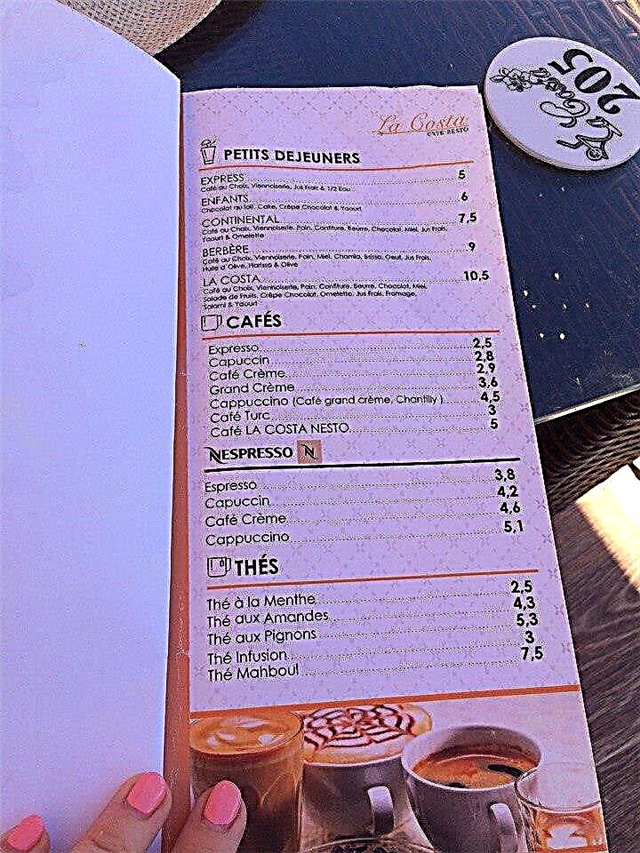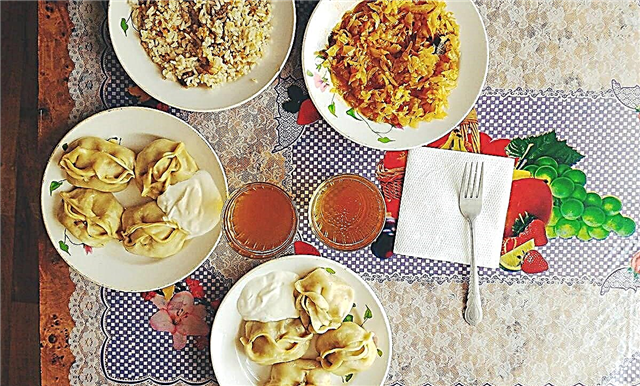There is no region more saturated with historical and cultural values than the Moscow region in Russia. Tourism of all directions flourishes here: from recreational - at numerous recreation centers and savages on reservoirs, to pilgrimage - to holy places, temples, monasteries. Dozens of thematic museums are open for history buffs: from local history and military to literary museums.
For art lovers, there are all kinds of art galleries and exhibitions. The region is also the center for the emergence and development of a number of traditional crafts. Small industries occupied by them have been operating for centuries, attracting tourists with their products and the opportunity to observe technological processes.
The most interesting and beautiful places in the Moscow region
List, photos with names and descriptions of popular attractions in the region!
Kolomna Kremlin
A powerful fortress with a rich history. Originally wooden, in the 16th century it was rebuilt into a stone one due to its important defensive significance. Inside the Kremlin there are several churches of different times of construction. Fascinating excursions are held around the territory, the history of the fortress is very rich, including mystical legends. Festivals of various kinds are often held here: music, folklore, ethnographic.

Museum-estate "Arkhangelskoe"
A well-maintained museum complex on the basis of an old estate. The palace of the estate is reserved for the museum of interiors, in addition to it, there are several old farm buildings available for inspection and a huge park. Entrance and parking are paid, but the price is symbolic, there is a cozy cafe on the territory. It regularly hosts art exhibitions, concerts and the annual jazz festival “Usadba. Jazz".

We recommend: The most interesting estates in the Moscow region.
Trinity-Sergius Lavra
Monastery of the XIV century, founded by Sergius of Radonezh. A place of pilgrim tourism, attracting visitors with Orthodox relics stored in the Serapion Chamber and a silver reliquary with the relics of the founder of the temple complex. The Lavra chime of unique church bells is also famous, in addition to power and melody, which, according to legend, has healing properties.

See also: 45 main attractions of Sergiev Posad.
New Jerusalem
A modern museum complex adjacent to the New Jerusalem Monastery. Its permanent exhibitions are devoted to Russian culture: pre-Petrine painting and Parsun writing, church art, artists of the 17th-20th centuries. A separate exhibition tells about the history of the monastery and includes unique exhibits: the staff of the reformer-patriarch Nikon, his parsun portrait, and religious utensils.

See also: 30 main monasteries of the Moscow region.
Lake Senezh
Reservoir of the XIX century, a favorite place for picnics and wild recreation of residents of the Moscow region. There is good fishing here, especially attractive for lovers of tench fishing, of which there is a large number because of the easy swamping of the reservoir. Those who prefer a more civilized pastime in nature can stay in numerous hotels and holiday homes that are scattered along the lake shores.

Don't miss: 30 popular lakes in the Moscow region.
Star City
You can visit the attraction only as part of an excursion group. You can see the museum, which consists of four rooms: the history of cosmonautics, Gagarin's room and private office (two different expositions), orbital stations, and the cosmonaut training center itself. Excursions to these two objects are separate, it should be noted that the cost doubles on weekends.

Prioksko-Terrasny Reserve
UNESCO Biosphere Reserve, which acquired its status in 1979. All types of flora of the region are collected here, but the main value is a collection of unique animals, both local and acclimatized. Among them are sika deer, bison and exotic steppe bison from America. The special pride of the reserve is the population of beavers, whose backwaters and dams with lodges occupy a fair share of the territory. The visit is carried out exclusively by agreement with the directorate.

Zhostovo factory of decorative painting
The ancient craft of painting on trays from Zhostovo is known outside of Russia. The factory has a museum, where samples of products that have received prizes at international exhibitions and unusual works of the enterprise's masters are exhibited. In addition to viewing the exposition, you can order an excursion directly to the workshop: observe the work and decorate the tray yourself, which you can pick up after processing.

Fedoskino factory of miniature painting
Here, traditional papier-mâché boxes and painted boards are made in a special, recognizable manner. Excursions to workshops and workshops are organized at the factory, master classes are provided separately. Under the guidance of the artist, you can paint a box or plate and take the resulting piece with you. During the production there is a small museum of finished products and a souvenir shop.

Savvino-Storozhevsky monastery
The monastery of the XIV century, now operating, although all the interior decoration of old buildings is a remake after restoration. It is notable for the presence, in addition to religious buildings, of several temples, a bell tower, the Tsaritsa's chambers and a palace - Tsar Alexei Mikhailovich liked to stay here with his family. The monastery is known for its unique raisin kvass, which monks treat to pilgrims.

Central Museum of the Air Force of the Russian Federation
A real men's museum dedicated to the history of the development of aviation technology. It consists of an open exposition showing aviation equipment: helicopters, airplanes (including experimental models), cruise missiles, rescue equipment, engines. And a museum of weapons, ammunition and a hall of military glory. The institution owns a huge archive and conducts scientific and educational work.

Armored Museum in Kubinka
A huge museum of various armored vehicles. It consists of 6 pavilions, four are reserved for domestic samples: heavy tanks and self-propelled guns, medium tanks and self-propelled guns, light tanks and tracked vehicles and an exhibition of infantry fighting vehicles, armored personnel carriers, cars. No. 5 is dedicated to the technology of the countries of the Coalition during the Second World War, No. 6 - to Nazi Germany and satellites. In addition to serial samples, unique prototypes of machines are also presented.

Museum-reserve "Gorki Leninskie"
Lenin V.I. spent the last years of his life in the museum estate, therefore most of the expositions are dedicated to the leader of the proletariat. The complex consists of four objects: the Gorki estate, the Lenin Museum, his office and the Peasant Life. There is an exhibition of exhibits of the Civil War, including a collection of propaganda materials of that time and the exposition "Mounds of Vyatichi". The territory is equipped with cafes, recreation areas and amenities.

Manor Dubrovitsy
Initially - the estate of boyar Morozov, but the present appearance was given to it by Peter I's protege Golitsyn. Now the Podolsk registry office and the Livestock Institute are located in the palace of the estate. Weddings in such an interesting place are very popular. Of particular interest is the Znamenskaya Church in the Baroque style, which looks significantly different from traditional Russian churches.

Museum-reserve "Borodino field"
Created on the site of two great battles of both World Wars. There are six permanent exhibitions: Milestones in history, the house of Abbess Maria, Borodino in the Second World War, a military gallery, "War and Peace" and "Glory forever!" Historical performances of battles are regularly held here as part of history festivals.When visiting, please note: all exhibitions are closed on Mondays, some on Tuesdays too.

Museum-reserve "Abramtsevo"
On the territory of his own estate, the industrialist Mamontov created the "Abramtsevo Art Circle". The gentlemen did not disdain peasant creativity, therefore, in the collections of the private collection that has become a museum, there are also examples of folk painting. Vrubel, Repin, Vasnetsov and many other famous artists donated their works to the future museum. Their reproductions can be purchased at the museum shop.

More about the estate: "Abramtsevo" - 15 main attractions of the museum-reserve.
Estate of A.P. Chekhov Melikhovo
There are many Chekhov estates in Russia, in this the writer spent 7 years, since 1892. Museum expositions reflect the entire path of Anton Pavlovich: as a writer, public figure, doctor. The funds include 20 thousand items, in addition to Chekhov's things, there are paintings by Levitan, Seregin, Polenov. On the basis of the museum, literary readings, music festivals, and a Christmas tree are held.

Museum-reserve of A.S. Pushkin
This state museum consists of two estates in the Odintsovo region - in the villages of Zakharovo and Bolshiye Vyazyomy. Here the poet spent his childhood before entering the Lyceum, both estates are sung in his poems. The expositions are dedicated to the work of Alexander Sergeevich and the biographies of his relatives. It is better to see the sights with a guide: every thing here has its own interesting history.

Estate of F.I.Tyutchev Muranovo
A small estate associated with the names of Tyutchev and Baratynsky. Visiting exclusively with a guide, for two hours of exploring the estate, tourists will learn interesting facts about the owners themselves and their famous guests of this house: Pushkin, Gogol. Inside is an excellent collection of paintings and antique porcelain. You can independently walk along the linden alleys of the park, visit the local church.

Belopesotsky monastery
A functioning nunnery, founded as a nunnery in the 15th century. The territory houses a cathedral and three churches, rebuilt after the buildings were used as a prison and a hostel in Soviet times. Of particular interest are the carved gravestones of monastic graves from the devastated monastery necropolis: some of them have been assembled into a kind of exposition, others are embedded in the walls of buildings.

Staro-Golutvin monastery
Monastery of the XIV century, located at the confluence of the Oka with Moscow. Numerous buildings (several churches, buildings of a pilgrim hotel and a brotherly hotel) have fallen into disrepair, now they are under restoration. Students of the Kolomna seminary and several novices live here, the place is not crowded, pilgrims are a rarity, tourists even more so. Suitable for a quiet holiday for lovers of solitude and connoisseurs of ancient architecture.

Volokolamsk Kremlin
An architectural ensemble of two cathedrals and a bell tower with an adjoining local history museum. The temples are interesting for the preserved ancient frescoes on the inside and interesting design of the facades on the outside. The museum presents the history of the region from the appearance of Bronze Age settlements here to the Great Patriotic War. Tourists are especially interested in exhibitions devoted to battles near the city and the Moscow battle.

Dmitrov Kremlin
From the mighty fortress of the 12th century, only an imposing earthen rampart that surrounds the temple complex with a museum remains. The Kremlin is visited by pilgrims and ordinary tourists, who have guides at their service. The museum is small, the objects collected here date from the beginning of the forties of the last century to this day. It should be remembered that the territory is closed for visits on Monday and Tuesday.

Zaraisk Kremlin
Well-preserved and subsequently restored fortifications of the 16th century with a complex of two cathedrals, the Zaraisk theological school and a museum inside. All religious institutions are active, but you can see them. Ordinary tourists gladly visit the museum, literally packed with archaeological antiquities and works of art: paintings by Repin, Abakumov, Pimenov.

Serpukhov History and Art Museum
The former mansion of the merchant Maraeva, who had a weakness for antiques. Over time, her private collection turned into a museum. The collection of paintings, graphics, unique furniture and sculptures is striking in its variety: from talented domestic but little-known masters to the works of eminent Flemings and Italians. The funds now have more than 40 thousand exhibits.

"Crane homeland"
A special reserve near Dubna, the main function of which is to protect flocks of cranes and schools of other wading birds during flights. Every spring and autumn, excursions are organized, timed to coincide with the departure of the wards of the reserve. Various contests with an environmental focus are held, for example, photographing birds on a specific route. The event ends with a joint picnic with dishes cooked in the oven.

Manor Marfino
The former estate that belonged to the Orlovs, Golitsyn, Saltykov and Panin at different times. Now it belongs to the sanatorium of the Ministry of Defense, but for tourists who want to see it, admission is free. Inside, this is a completely modern medical institution; people come to admire the unusual architecture and decor of the facades. Plus, you can walk through the extensive and well-groomed park of the sanatorium.

Syana's caves
An extensive network of underground quarries, the total length of grottoes and passages is 27 km. The caves are well-groomed and considered safe. Ideal for acquiring basic caving skills: dungeon orientation, claustrophobic tests, and “skins” - narrow manholes between halls. However, it is strongly discouraged to visit the quarries without an instructor.

Mozhaisk reservoir
Artificial reservoir with wooded banks. All kinds of outdoor activities are available here. Excellent fishing for trophy-sized pike, hunting a variety of game in picturesque forests and swimming on sandy beaches. Yacht clubs are waiting for sailing fans, you can rent a catamaran, motorboat or jet ski. Ilyinsky has a huge entertainment center with a water park, a cafe and a comfortable hotel.

Peremilovskaya height
A strategic height, where the soldiers of the Red Army grappled with selected Nazi units. In memory of the bloody battles, a monument was erected here, depicting a Soviet soldier going on the attack. It is noteworthy that the surname of General Vlasov is engraved on the memorial plaque. In that battle, the traitor showed heroism and military skill, for the edification of his descendants they did not blot out his name.


